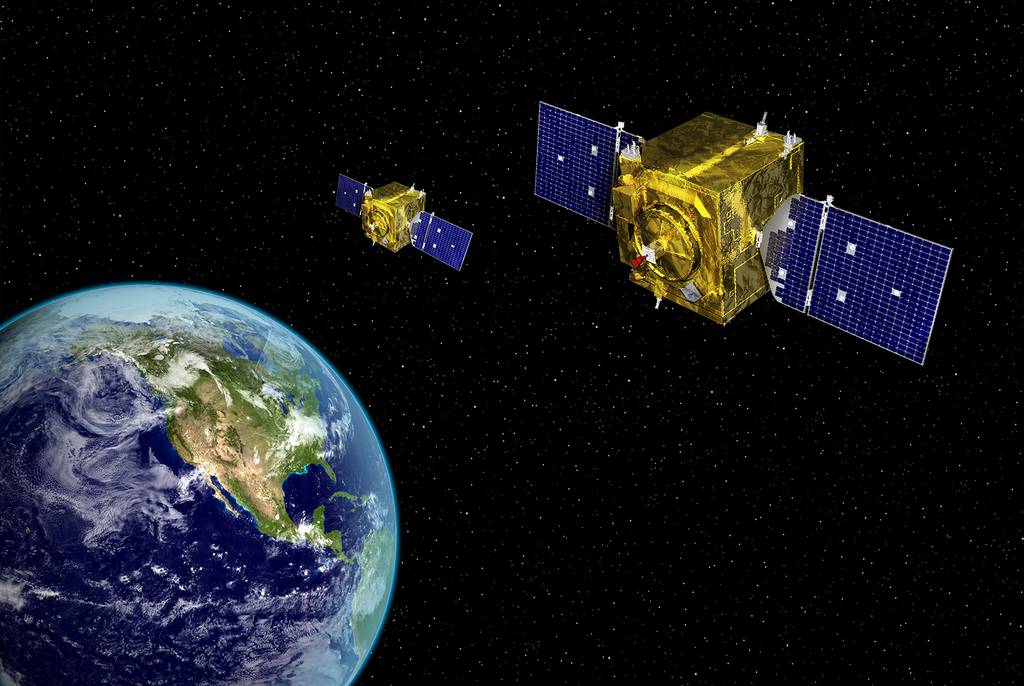The Pentagon wants to know what its adversaries are up to in the area immediately beyond geosynchronous orbit, and the Space Development Agency has a plan to deliver.
Currently, that blueprint involves three rapid, semi-autonomous Advanced Maneuvering Vehicles operating in cislunar space, the area between geosynchronous orbit and the moon’s orbit.
The SDA was launched in March to develop a proliferated architecture to address several Department of Defense needs in space, from detecting and tracking hypersonic weapons to providing alternative position, navigation and timing data. One part of the agency’s notional architecture is a so-called deterrence layer focused on activities in cislunar space.
That layer is meant to discourage bad behavior in deep space by other nations, said Jerry Krassner at the agency’s industry day July 23. Krassner heads up the SDA’s deterrence layer project. It does this by providing two types of information: Who owns the objects in space, and what those objects are up to. By providing that information, the deterrence layer will allow the military to respond in a way that it hopes will makes those missions too costly for adversaries to continue.
The SDA’s notional architecture proposes a four part deterrence layer. The first part, located in low earth orbit, would be made up of outward facing space situational awareness sensors capable of providing data on deep space objects located immediately beyond geosynchronous orbit. The second part would be two satellites operating in highly elliptical orbits providing other angles for detecting objects in deep space. The third part would include sensors operating in lunar orbit, and the fourth and final part would have them operating three Advanced Maneuvering Vehicles.
The AMVs appear to be a deep space counterpart to the Geosynchronous Space Situational Awareness Program satellites. Operating in near-geosynchronous orbit, the GSSAP satellites are capable of rendezvousing with space vehicles in geosynchronous orbit to provide more data on them. While information on the proposed AMVs is limited, SDA leaders explained how they see the vehicles operating.
“The notional AMVs fit with the deterrence layer of the National Defense Space Architecture in that by flying to rendezvous with a suspect object returning from deep space (e.g. the region of the moon), the U.S. could communicate to a threatening nation that we know the location of their vehicle and, if we consider it an object of concern, the information provided from the AMV could support diplomatic demarches or similar responses that could deter the ultimate use of a weapon by the enemy,” an SDA official told C4ISRNET.
The agency is considering “equipping them with a camera or similar payload to demonstrate to the operator that ‘we know where it came from.’”
Furthermore, the agency insists the vehicles are not offensive weapons. An agency official said there was no plan to arm the vehicles or have them come into physical contact with any satellites while in operation.
The proposed vehicles would likely operate semi-autonomously in terms of execution with a man-in-the-loop for decision making and monitoring.
The SDA proposed three vehicles at their industry day July 23, but in a follow up email the agency clarified that the concept is still being defined and that officials weren’t wed to a specific number or size of the vehicles.
Responses to the notional architecture, including thoughts on the AMVs, were due Aug. 5.
Nathan Strout covers space, unmanned and intelligence systems for C4ISRNET.








